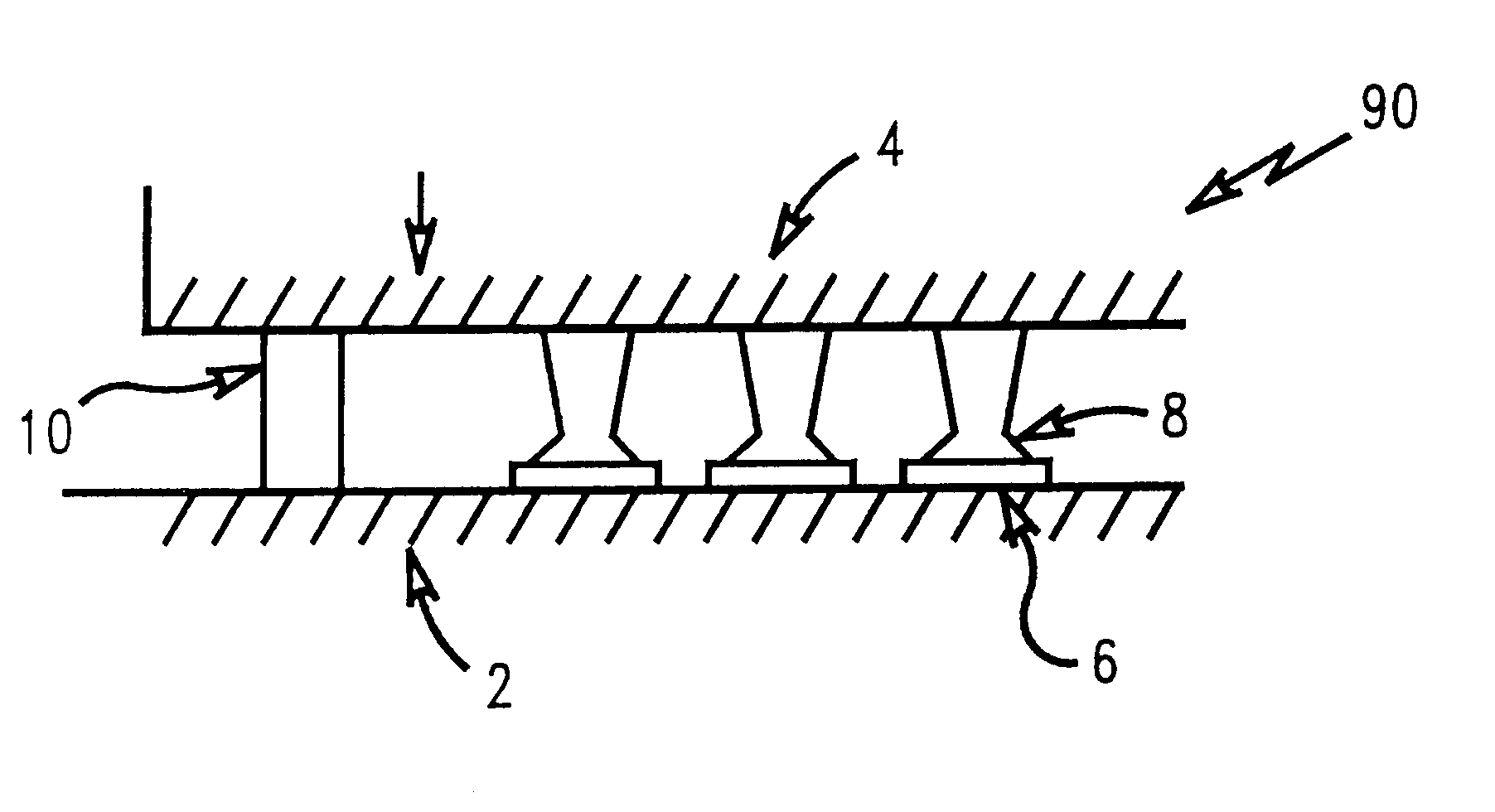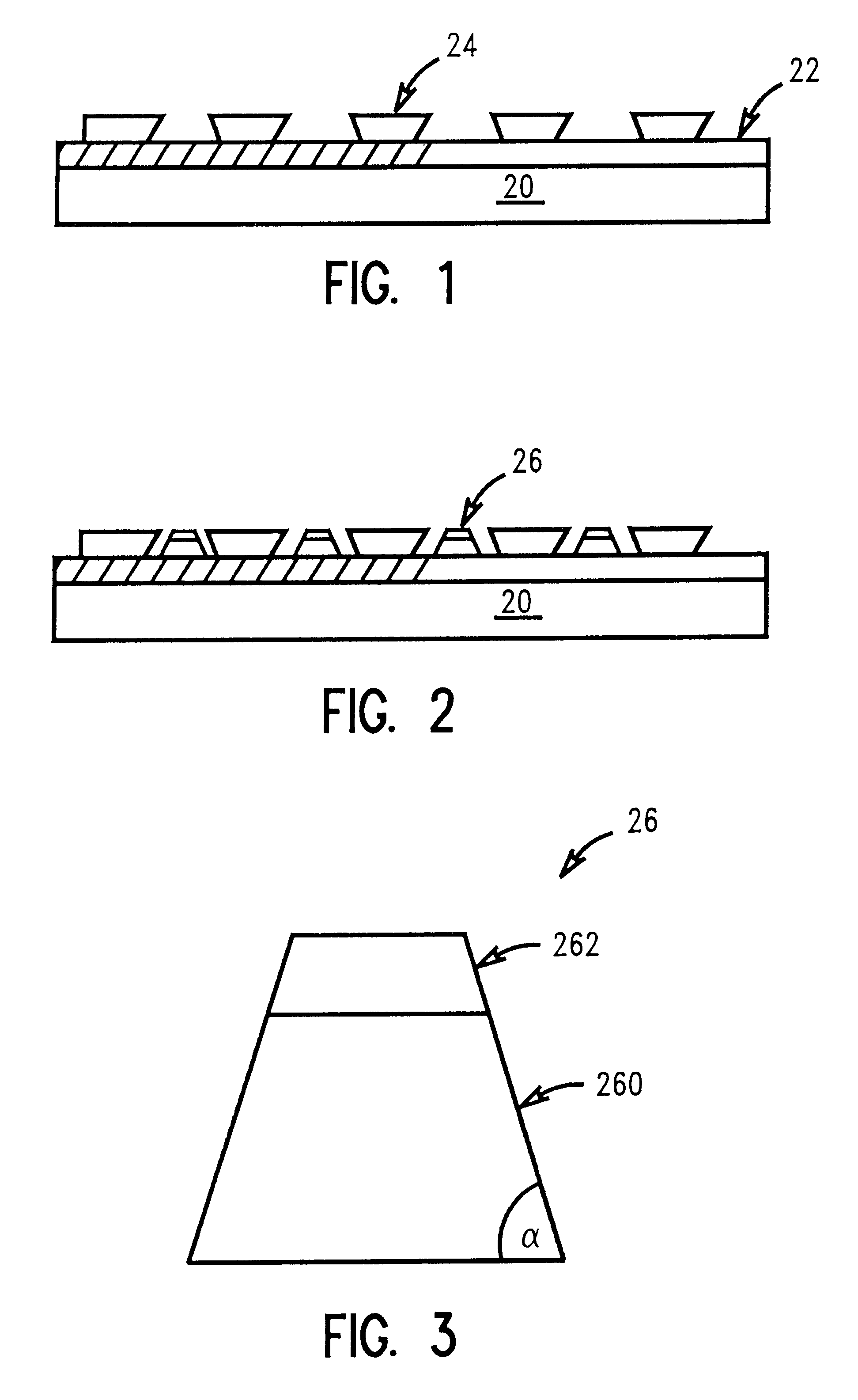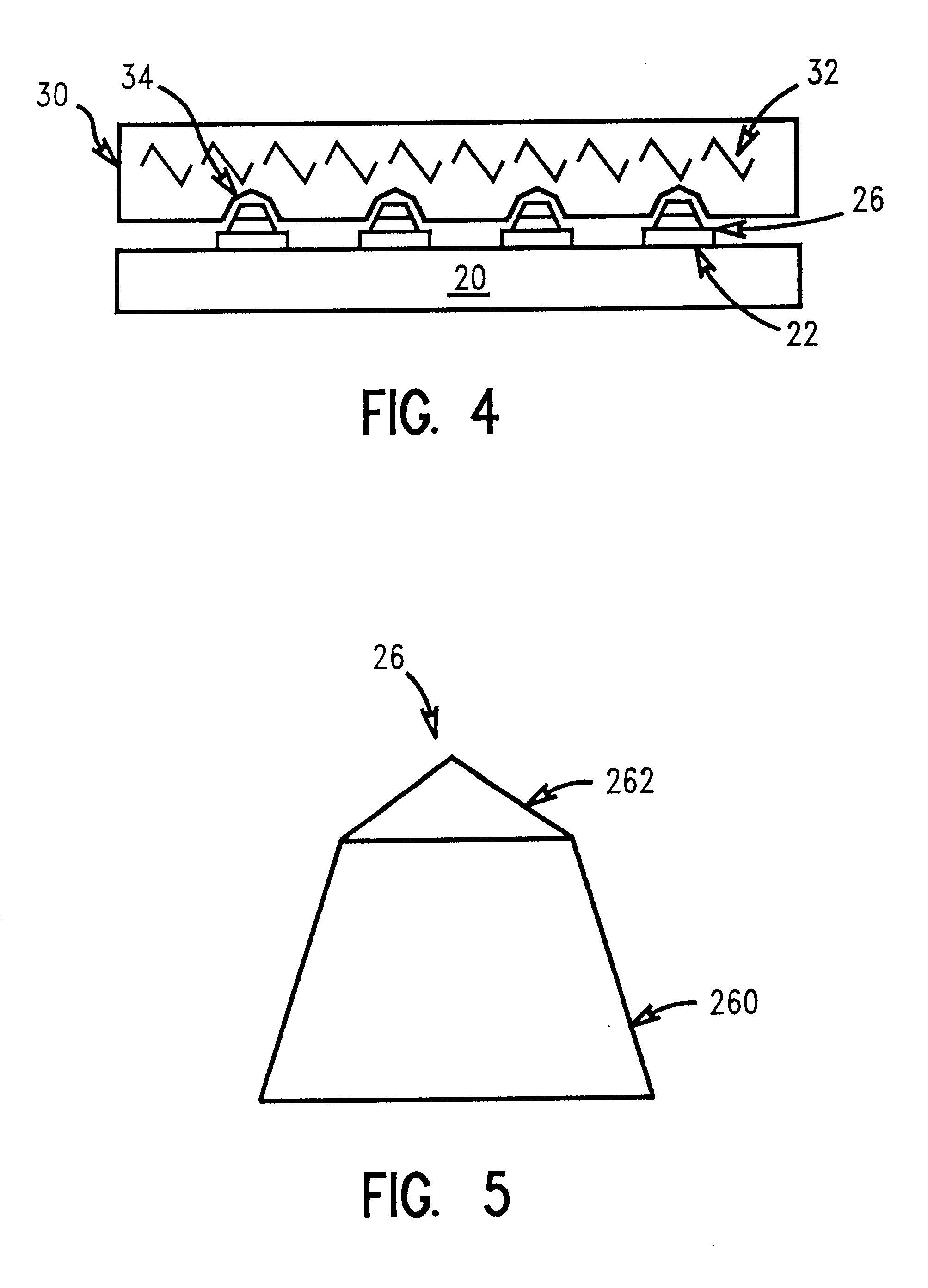Process for forming cone shaped solder for chip interconnection
a technology of cone-shaped solder and chip interconnection, which is applied in the direction of sustainable manufacturing/processing, soldering apparatus, final product manufacturing, etc., can solve the problems of significant deviation from planarity, non-planarity across the chip site, and inability to tolerate, etc., to achieve the effect of improving reliability
- Summary
- Abstract
- Description
- Claims
- Application Information
AI Technical Summary
Benefits of technology
Problems solved by technology
Method used
Image
Examples
Embodiment Construction
)
In describing the preferred embodiment of the present invention, reference will be made herein to FIGS. 1-9 of the drawings in which like numerals refer to like features of the invention. Features of the invention are not necessarily shown to scale in the drawings.
In FIG. 1, a semiconductor chip 20 has been processed through all prior processes such as device formation, and wiring layers as shown. At this stage, the wafer 20 has a deposited blanket seed layer 22 such as a chromium copper alloy or a titanium copper alloy. Upon the seed layer 22, a thick film resist 24 is deposited, patterned and developed according to a desired array for solder interconnections. A typical photoresist used in this process is Riston.TM..
Once the photo resist 24 has been developed, a solder preform is formed in the exposed areas of the resist. Preferably, a two layer solder preform 26 is plated or otherwise deposited as shown in FIGS. 2 and 3. The first solder layer 260 may be a high melting solder all...
PUM
| Property | Measurement | Unit |
|---|---|---|
| diameter | aaaaa | aaaaa |
| thickness | aaaaa | aaaaa |
| thickness | aaaaa | aaaaa |
Abstract
Description
Claims
Application Information
 Login to View More
Login to View More - R&D
- Intellectual Property
- Life Sciences
- Materials
- Tech Scout
- Unparalleled Data Quality
- Higher Quality Content
- 60% Fewer Hallucinations
Browse by: Latest US Patents, China's latest patents, Technical Efficacy Thesaurus, Application Domain, Technology Topic, Popular Technical Reports.
© 2025 PatSnap. All rights reserved.Legal|Privacy policy|Modern Slavery Act Transparency Statement|Sitemap|About US| Contact US: help@patsnap.com



